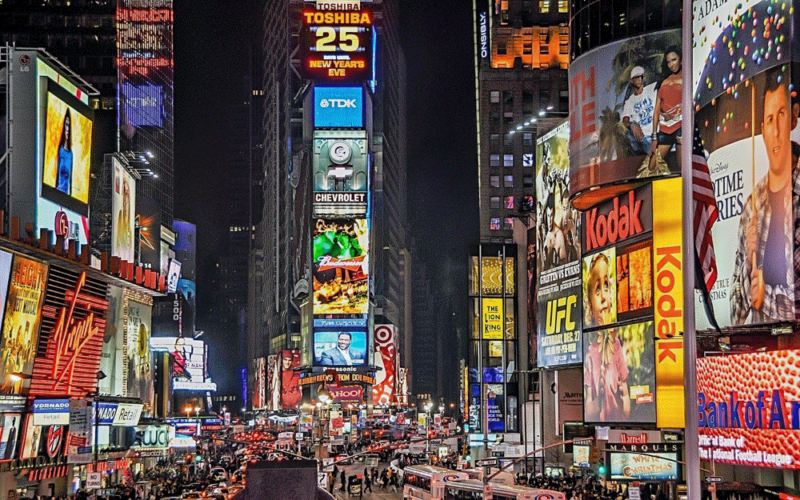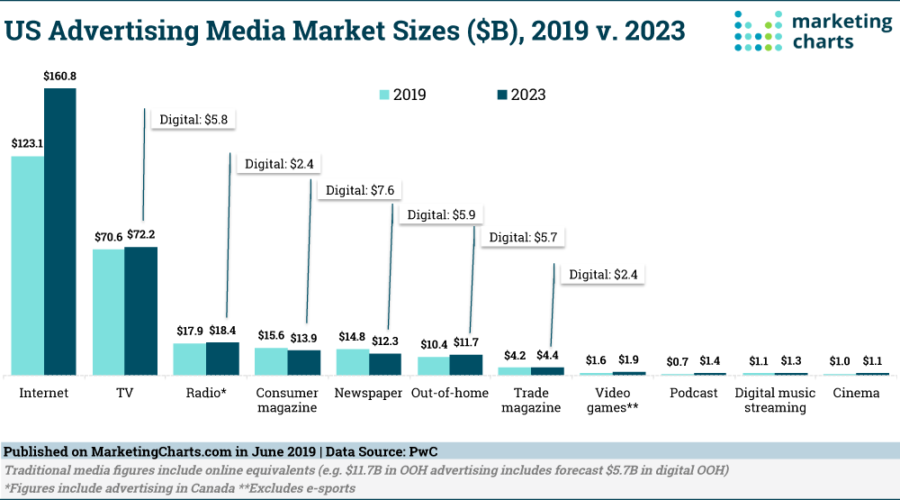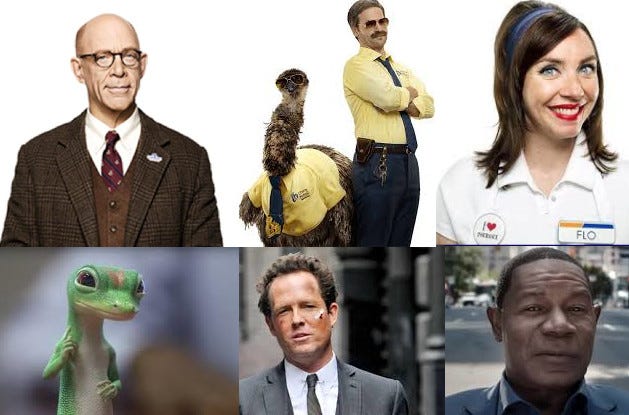Too Many Ads! The State of Our Commercialized Media
Most media are fighting for scraps left behind by Google, Facebook, and Amazon.
Hold on! I want to watch these commercials before we go out.
–Said no one, ever.
Too Many Ads
It is estimated that the average American is exposed to 4,000 to 10,000 ads per day. No wonder people hate ads. According to Forbes, marketers spend billions on ads and consumers will take any opportunity to avoid them.
Even the most likeable ad will barely dent my shell of indifference toward any interruption of content. On the other hand, you are more than welcome to click on each ad on this page. (My hypocrisy is salient, no?)
US advertising spending hit $171 billion in 2021. American ad agencies enjoyed $59.2 billion in revenue (2021). While you were complaining about ads being more intrusive (71%) or overwhelmingly numerous (74%), businesses made anywhere from two to four dollars for every dollar spent on advertising. Well, at least they’re happy.
Google That
As you could probably guess, the internet and television are still advertising titans though the future favors digital ads.
In the digital space as of 2022, Google reaped the largest ad spending market share, at 27.7%. Facebook followed close behind with 24.2% with Amazon a distant third at 13.3%. Over 90% of US businesses spent $56 billion on social media advertising in 2022.
Mainstream Media
The above chart delivers a stark graphic statement about the dominance of online advertising. The traditional media that some of us grew up on and still cherish carry revenue projections that barely move the needle or are in decline.
Television ad growth is surprisingly paltry, as cord-cutting young families turn to ad-less streaming. The same principle holds true for newspapers, as they increasingly turn to online content and erect paywalls.
Radio, Radio
Traditional AM/FM radio has stubbornly stayed in the game. It has long since passed newspapers in revenue derived from localized content. The biggest reason has to do with Americans’ love for the automobile. In a survey published by MarketingCharts.com, respondents ranked radio’s appeal as follows: easiest to listen to in the car (71%), it’s free (62%), keeps me company (44%), and what’s going on locally (36%). Radio is capable of reaching 59% of the US population daily.
As a diehard consumer of radio (I was in the business for a while), something caught my ear recently that gave me clarity. Instead of deploying 30- or 60-second commercial breaks that are independent of content, radio is now favoring radio sponsorships that are baked into regular programming.
When I listen to my favorite news radio station each morning, I have come to notice that the traffic report is sponsored by a home improvement outfit, the weather is supported by some other local business, sports another business, and news headlines (“three things to know!”) are sold as well. Does this seamless wall of advertising affect the integrity of its news gathering? That seems like a quaint notion in 2023.
Too many ads.
Golf Broadcast Gets Backlash
The regulatory body for media, the Federal Trade Commission (FTC), concerns itself mainly with deceptive messaging or fraud. It is no longer interested in monitoring ad quantity versus content. Why? Because in a nod to unadulterated capitalism, this is an area that polices itself. Well, most of the time.
In the broadcast of June’s US Open golf tournament, people were counting more than birdies and bogeys. According to USA Today Sports, there were more commercials (15) than golf shots (11) during the opening 12+ minutes of play. To make sure that it wasn’t an anomaly, someone counted off 24 minutes later in the afternoon. The result: 20 commercials and 23 full-screen golf shots, or nine minutes of ads versus 15 minutes of golf coverage.
Tournament CEO Mike Whan announced that the USGA would work with NBC to reduce commercials by 30%.
Indy 500: Six Laps of Commercials
The month before, another iconic sporting event earned the wrath of its dedicated fans. The Indianapolis 500 is notorious for its endless commercials and the 2023 race was no exception. Here were some reactions on Twitter:
We now interrupt this 3 hour commercial marathon with a couple minutes of the Indy 500.
Trying to watch this on TV. Literally every 5 minutes there are 2-3 minutes of commercials. Some are SO LOUD. This coverage [stinks].
NBC comes out side by side commercials and goes right back to commercial.
Ads ads ads ads ads.
Way too many commercials especially since I’m watching on Peacock which I pay for just for IndyCar.
Why Are We Seeing More Insurance Ads?
Whether it’s Jake from State Farm, Flo with Progressive, or Doug and that, uh, bird from Liberty Mutual, insurance has replaced beer as the most ubiquitous brand of advertising on network and cable TV. In 2021, according to the New York Post, approximately 15,600 beer commercials aired on TV compared to a whopping 104,270 insurance ads. in terms of growth, insurance ads increased from 71,000 minutes of airtime in 2016 to 109,297 minutes in 2021, a 52.3% jump.
To what do we owe this pleasure? Back in the day, insurance ads were stoic and straitlaced, like Prudential’s “Rock of Gibraltar.” The severity reflected the nature of insurance itself: complex, emotionless, mysterious. “Insurance is a dry, serious business,” observed Ryan Raab, a Madison Avenue creative director. “It’s not something consumers think about often [except] when something bad has happened.
“Why not bring them some joy?”
A Mascot Is Born
Ad agencies struggled to crack the code and in 1999, the file was handed to advertising legend Linda Thaler. The client was Aflac, which sells supplemental insurance to employers. In a burst of frustration and imagination, Thaler marched through her agency office shouting, the name is Aflac, Aflac, AFLAC! A copywriter said she sounded luck a duck quacking. A mascot was born.
Name recognition is the ultimate goal of this advertising. In Aflac’s case, it’s not even something a consumer can directly purchase.
Coda
To emphasize what I wrote at the top, the average American is inundated by 4,000 to 10,000 advertisements a day. That’s about double the number of ads an average person saw in 2007 and five times the number a person saw in the 1970s.
The reason is obvious: the internet, in the form of search, social media, retail, and the proliferation of online websites like this one. I make no apologies for the smidgen I collect in revenues, which Google takes most of, anyway. Would you rather have me mount a donation page? Didn’t think so.
We might as well get used to it: Too. many. ads.
Disclosure: This post was written with above-average human intelligence. No AI was used.






















































































































